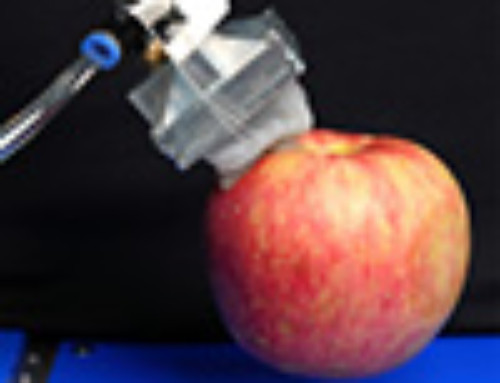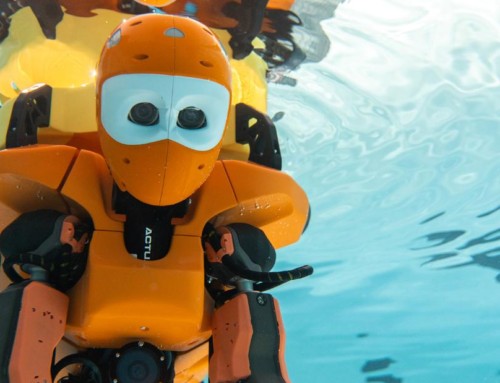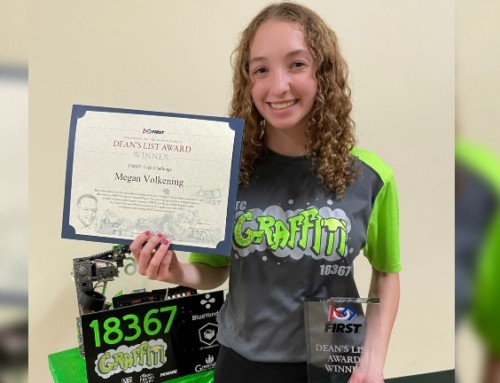[ad_1]
The wine industry takes the first tentative steps to replacing humans among the vines.
By Liza B. Zimmerman | Posted Friday, 15-Mar-2019
The car industry has long featured sexy footage of luxury vehicles zooming along the highway. However the wine industry, particularly in the United States, has been slow to come to the party in terms of how it uses robotics and artificial intelligence to promote wineries and generally enrich the hospitality experience.
Newly developed technology can be as good at showing off images of a high-altitude vineyard as it is at helping to harvest it more effectively than humans can at this time: and often at a lower price point.
So it is not surprising that European academics have led the way on much of this technology and how it is being effectively applied. Christophe Gaviglio, a professor and researcher at the Institute Français de la Vigne et du Vin in southern France says that the bulk of the new robots are made “for mechanical weeding. There is also a small mowing robot.”
While automation can increase speed and accuracy at many vineyard tasks, the machines themselves will also need to take breaks. He jokes that these robots, no matter how effective they may be, won’t be able to work 24/7 as “they will need some charging of their batteries.”
Where they are being used
Some of the larger European producers have – not surprisingly – been putting some of the latest technology to use. The Symington family in Portugal’s Douro Valley has used them in their vineyards before, but didn’t provide further details for this story.
Gaviglio also confirms that large French companies like Hennessy, in the Cognac region, are also implementing this kind of technology. Other American academics also think that the use of this kind of technology may be better suited for larger wineries.
He surmises that, while in the end, robotics should cost less than the usual human and tractor costs, today “they are still pre-series prototypes, they are still too expensive to be competitive”.
For the most part, he adds, the majority of producers using robots in their vineyards tend to own them. However, in the long-term “we cannot exclude a rental proposition from the manufacturers. For example, vitirover [a small mowing robot] sells the use of the robots as a service.”
He adds that the technology was essentially developed to deal with “problematic soil management and alternatives to herbicides, which require more time than usual. The mechanical weeding robots will be able to achieve other tasks like shoot removal, spraying or trimming. Other robots will be able to prune during the winter using very constant decisions rules in order to respect the vine’s development.”
However these prototypes, he notes, have always been expensive. The first serious experiments with them were launched in 2018. He adds that with this technology, efficiency is key because “productivity is still to be assessed. The other robots are still, at the moment, prototypes with high price tags between €80,000 and €130,000 [$90,000-$150,000].”

© Imbibe
| Symington’s experiment with robots was, by all accounts, a success.
An academic’s perspective
Many enology professors in wine country can see the value in applications of this kind of technology. “Robotics are being developed for many vineyard applications from what I have seen there is great promise in many of these applications. However, adoption will be based upon price and ease of use. So as usual, larger companies will be able to adopt robotic technology much sooner than smaller producers. That is until the price and/or complexity drops,” adds Gregory V. Jones, director of the Evenstad Center for Wine Education at Linfield College in McMinnville, Oregon.
The way in which this new technology functions can actually be more precise than a human worker. “Agricultural robotics technologies provide mobile sensing, computation and actuation that enable precision farming at ever-increasing spatial and temporal resolutions, even at the individual plant level,” shares Stavros G. Vougioukas, an associate professor in the department of biological and agricultural engineering at the University of California at Davis.
There is also no doubt that this type of technology is going to be a boon for producers given the current labor shortage in much of wine country, particularly in California after the fires that ravaged much of Napa and Sonoma. He continues to say that, “They also hold the potential to remedy existing and imminent farm labor shortages by increasing or by replacing workers in low-skill, labor-intensive tasks, like manual weeding or harvesting.”
What is more, “In vineyards, the presence of vines, infrastructure or workers poses an additional challenge for agricultural robots, that of autonomous and safe navigation that relies on sensing and perception, rather than solely on GPS. Issues of cost, deployment and integration with existing machinery and operations also needs to be resolved. Finally, autonomous operation will need to become legal, under specific conditions, for the current pre-commercial prototype robots to operate in production vineyards.”
Other academics concur with Vougioukas’ perspective at Davis. “The theoretical implications suggest that robots are the way to go and it will just be a matter of time before this occurs. The article suggests that costs and a lack of commercialization are the sticking points at this stage, and the two producers here in Portland suggest the same. That’s typical of any industry in the introductory stages,” says Damien Wilson, a professor at the Wine Business Institute at Sonoma State University.
A handful of major wine schools are currently testing robotics out in the vineyards. “At the moment we have drones being used to observe, scare [away pests] and spray in the vineyards. However, as visual recognition technology, overlaid on geospatial data improves, we’ll be seeing these tasks being automated as well,” shares Wilson. “These tasks can be easily automated and run up to 24 hours a day, as required. Any time observation and/or monitoring is involved, as image recognition technology improves, these tasks can become more and more easily automated.”
The long-term implications
What such automated technology will be able to do for the wine business and the humans who work in it is hardly clear at this point. Wilson notes: “I’m not sure that these processes change the philosophy of winemaking as much as the convenience and timing considerations for each stage of the process. As these processes become more automated, the choices available to the winemaker will improve. The idea that human beings are the only variable element in production is a fallacy.”
From a financial perspective, Rob McMillan of the Silicon Valley Bank’s wine division notes: “Robotics, and to a larger extent, automation is being increasingly used in agriculture. That’s needed for efficiencies and labor savings when the cost and availability of labor is becoming increasingly problematic. But some automation, such as optical sorters, also improves quality by more effectively removing undesirable fruit on a sorting line, much quicker than a human.”
Bottom line, Gaviglio doesn’t think the robots pose any current threat to the present human-caregivers of the vineyards. “Producers will still decide what to do; they will have a choice to use a robot or a tractor.” In the end, he notes that even with their presence, wine itself is not any more likely to become an industrial product.
“The vine itself has huge variations.”
[ad_2]
Source link





Leave A Comment
You must be logged in to post a comment.